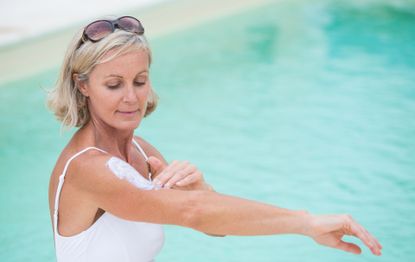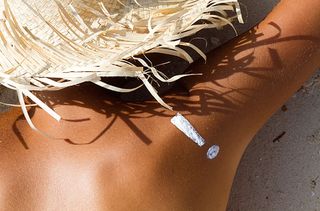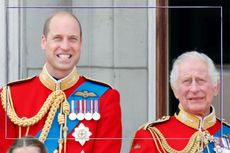Why your sunscreen is giving you less protection than you think


Whether you’re a fan of a transparent spritzer or prefer traditional white cream lotions, few of us are applying a sufficient amount of sunscreen to protect ourselves, the latest research has revealed.
A new study from King’s College London has shown that protection from the sun’s UV radiation was only significant when sunscreen was applied at a thickness between 1.3 and 2.0 milligrams per centimetre squared.
According to previous studies, most people are only applying a layer of 0.75 milligrams per centimetre squared, which provides a mere 40% of the protection you should be getting from a particular SPF (sun protection factor).
Most skin cancers are caused by DNA damage from the sun’s UV rays.
To test the effectiveness of sunscreen when it is applied in a way closely resembling most people's day-to-day use, researchers measured the amount of DNA damage in the skin of 16 volunteers who wore varying thicknesses of sunscreen when they were exposed to UV light.
The volunteers were split into two groups, with one receiving just a single dose of UV radiation to mimic sunlight exposure while wearing a typically thin layer of suncream, and the other receiving many doses over a 5-day period, which one might experience on holiday, while wearing the recommended amount of suncream.
Volunteers received the radiation within 15 minutes of applying sunscreen, and skin biopsies were taken immediately after UV exposure.
GoodtoKnow Newsletter
Parenting advice, hot topics, best buys and family finance tips delivered straight to your inbox.
The results showed that volunteers who wore their sunscreen at the manufacturer-recommended level of thickness had the most significant protection from sun damage, even after being exposed to high doses of UV over a longer period of time, compared to those who wore a thin layer but received less UV.

Is it time to ditch the factor 15? The KCL scientists recommended people wear a higher SPF (at least SPF 30) to compensate for the usual thin application.
‘Given that most people don’t use sunscreens as tested by manufacturers, it’s better for people to use a much higher SPF than they think is necessary,’ said Antony Young, study leader and professor of experimental photobiology at King’s College London.
SPF ratings are given from the manufacturer based on the assumption that the sunscreen is being applied at least 2.0 milligrams per centimetre squared.
‘People are typically getting much less protection than they think,’ he added.
‘For example, if you get SPF20 and use at a lower thickness of 0.75 milligrams per centimetre squared, your level of protection could be as low as SPF4.’
Though sunscreen may be pricey, it’s important not to skimp, so make sure you coat it on thick! It's also worth remembering that sun cream does go out of date, so make sure you check the expiry date and stock up when you need to.

Anna Bailey has been the editor of Goodto since 2018. Before joining the team she was Features Editor at MSN UK, where she oversaw Family Health and Days Out. Previously, she was Digital Lifestyle Editor for the broadcaster UKTV, and Lifestyle Editor for ITV.com. Anna studied Multi-Media Journalism at Bournemouth University and went on to gain her NCTJ and NCE journalism qualifications. Anna is responsible for driving the direction and editorial strategy of Goodto. A mum and experienced baby product tester, she is passionate about providing safe, trustworthy, and relatable advice for families of all kinds.
-
 Gen Z's happiness is most driven by a 'sense of purpose', according to new research - but data shows it declines as they reach adulthood
Gen Z's happiness is most driven by a 'sense of purpose', according to new research - but data shows it declines as they reach adulthoodThe number one thing that is driving Gen Z happiness has come as a surprise to some
By Ellie Hutchings Published
-
 Prince William ‘reduced King Charles to tears’ with surprise plans to carry on vital family history
Prince William ‘reduced King Charles to tears’ with surprise plans to carry on vital family history"I couldn't believe it - I was deeply touched and moved"
By Charlie Elizabeth Culverhouse Published